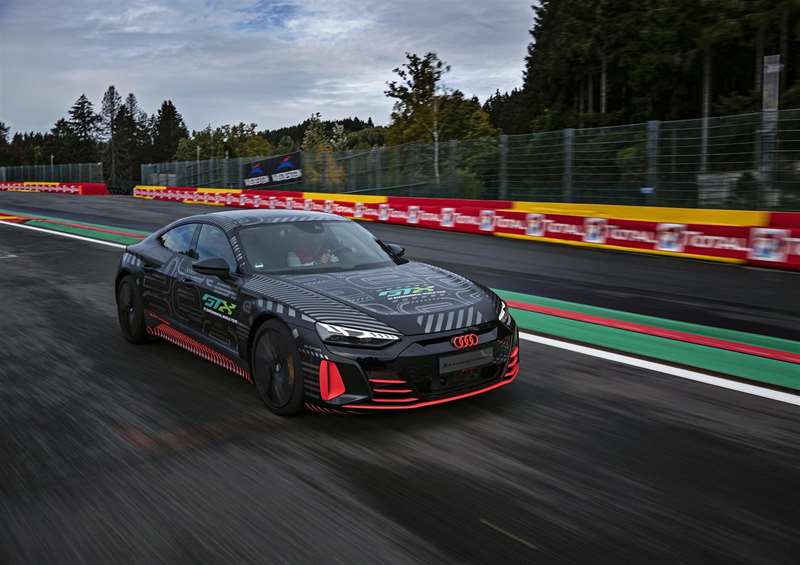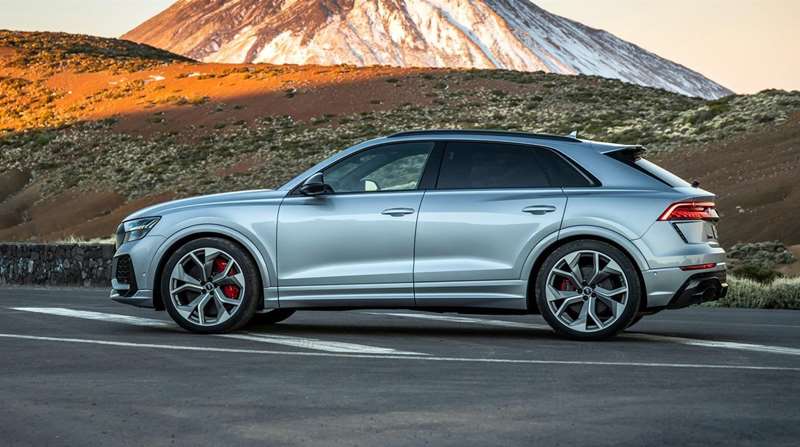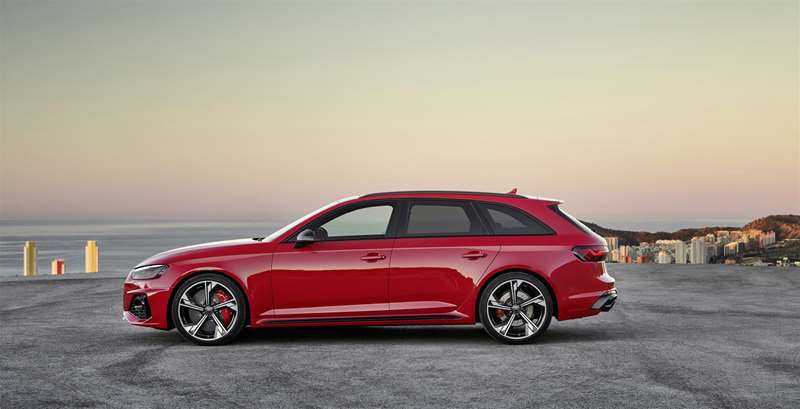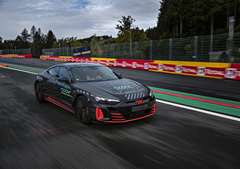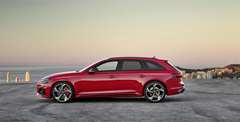‘‘Get the nose in tight . . . ease off on the steering, let it settle . . .right, we’re into it . . .power, power, power!’’
Nothing quite like having ‘‘Racing Ray’’ Williams alongside you to lend helpful tips about how to best attack Hampton Downs circuit, south of Auckland.
I’ve been around this place plenty of times, and feel I have a fair handle on it, but then this effervescent legend of New Zealand domestic motorsport slides into the car and I learn something new.
He doesn’t mind relating his immense race-winning knowledge at tyre-squealing pace, either. Just so long as you’re doing as he suggests. I am, and we’re having a ball.
It would be terribly difficult not to be having fun, truth be told, because today is a familiarisation with a broad sweep of Audi’s performance range.
This year that range becomes quite a feast, covering everything from the $114,900 294kW/480Nm 2.5-litre five-cylinder RSQ3 to the $346,900 R8 coupe, with a 449kW/580Nm V10 and a top speed of 331kmh.
Three kinds of test are on offer: Hot laps, slalom driving and off-the-line sprinting, with drag strip countdown lights (hot tip: nail it about a microsecond after the third green, and, in the moment the car takes to hook up, the sequence will have neatly nipped into ‘‘go-now’’ yellow).
This isn’t my first RSday, but they’re hard to turn down and there’s additional pull from thinking that the 2020 event might be the last of its kind.
The fan club shouldn’t fret — they’re not pulling the plug, just the opposite. From 2021, they’ll be plugging in. With electrics adding anew edge.
First, some background: Audi NZ’s RS imprint. Everything goes back to the mid-1990s RS2, the five-cylinder first-of-the-breed co-developed with Porsche that is highly-prized now, even though the first official year of RS distribution rights in New Zealand was 2002, when the original RS6 with a4.2-litre V8 came on stream. Fifty-three RS cars were delivered in New Zealand that year.
Interest in the hard nuts from the RS headquarters in Neckarsulm, Germany, and the still power-packed, but less overtly pugnacious S cars from Audi’s nearby home town, Ingolstadt, has kept climbing since, peaking in 2017 with 517 registrations.
The RS-specific run is worldclass per head of population: our imprint — 20% of overall annual Audi sales volume, doubling that of the next hottest fan zone, Hong Kong.
That popularity was welltended to this year, with eight of the 25 new models Audi NZ introduced being RS models. While Covid-19 has disrupted some build rates and caused delivery delays, it certainly hasn’t hurt local enthusiasm, Audi NZ general manager Dean Sheed says.
As of the day of our event, Audi New Zealand had sold 264 S models and 251 RS models this year. Combined, those tallies account for 40% of annual national buy-in for Audi New Zealand; a hefty result that delights.
So RS is thriving and set to get bigger. Rights holder European Motor Distributors is so highly regarded by Germany that it gets to call early dibs on all new product in the pipeline. An updated SQ5 tops the line of updated Q5s coming in 2021. We’ll also be an early adopter of the refreshed SQ2. Anew A3 arriving in the second quarter will, in time, undoubtedly spawn another RS3.
Next year, though, the biggest headline acts are electric: a quartet of battery-reliant models joining the muscle club. There’s the e-Tron S, the next version of the wagon and Sportback 55 (and 50, in wagon) models already on sale, pepped by having three motors rather than two. Then there’s the e-Tron GT, Audi’s equivalent of the Porsche Taycan. Same underpinnings and dual motor drivetrains, though different in driving feel, releasing in two levels, the higher developed in Neckarsulm. So, yes, the first RS electric car.
There’s bound to be a bit of joshing going on between the e-Tron S and GT owner sets; the first has three motors (two rear, one front) whereas the other has two, and delivers more torque — 973Nm versus 850Nm. Power-wise, the 447kW RS has a 75kW advantage, and in accomplishing the 0-100kmh sprint in 3.5 seconds, will be a second clear of the S, according to manufacturer claims and makes it Audi’s fastest four-door car, though not quite the fastest and most powerful VW Groupvehicle with this drivetrain (the Taycan Turbo Shas a 560kW/ 1050Nm version). Still, overseas tests of RS e-Tron GT prototypes suggest the hot Audi is hot enough. Feedback, too, suggests it’s Taycan-capable in corners and has a better ride quality.
Pricing and specifications aren’t due until February, when pre-ordering starts. Yet it’s easy to foresee it comfortably undercutting the Porsche’s $366,900 sticker.
Sheed is confident the extra oomph e-Trons will easily find homes and, quite potentially, some RS owners will find this is the right time to move into the electric space.
Audi New Zealand is certainly striving to make a smooth transition. Preparation for this additional e-Tron onslaught requires more than making extra showroom space.
Audi dealerships are gearing up in other ways. All now feature a 50kW DC charger as a minimum and some are now ramping to more powerful 175kW DC fast chargers — ideal for the GT, which is compatible with chargers up to 350kW.
The e-Tron S derivatives and the GTs are mid-year arrivals, which means the next Audi RS day could have a different vibe to the one I’ve just attended.
So might the sales penetrations. Expectation is that the e-Tron models will account for 20% of Audi’s 2021 volume. Conceivably, given the release timings, the big electric-versus-fossil fuel showdown in the sports arena won’t happen until 2022, but it cannot be avoided.
Quite probably, the petrolheads won’t be adverse.RS tastes are already changing. For instance, the days when the RS4 was the core buy-in are over. At present, the RSQ3 is the best seller, with 30% penetration. The RS6 and RS4 are next on 23% and 18% respectively. Then it’s the RS3 and RSQ8, on 10% and 9%.
At this year’s RS day, the RS4 was the track star — such perfect balance between power and poise and, notwithstanding that RS has promised the e-Tron GT will have a suitable, but synthesised, sports soundtrack, it’s hard to imagine it beating the RSQ8’s Wagnerian full-throttle bellow.
Still, on the drag run, stomp is what counts. And from all I already know, any of the RS cars we have now won’t stand a chance against what’s coming.
- Richard Bosselman
Photos: Audi

